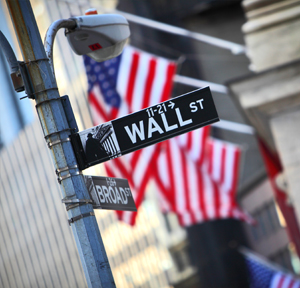Financial Results
US Banks Raise Dividends After Fed's Stress Tests

Four of America's largest lenders say they will boost dividends following the Federal Reserve's stress test results. The Fed has been checking on the health of financial firms to assess how they'd handle a recession – which some economists say is likely.
A quartet of the largest US banks – all of them with wealth
management operations – are to pay more money to shareholders
after getting a clean bill of health over their financial
strength from the US Federal Reserve.
Goldman Sachs
said it will raise its dividend to $2.50 a share from $2.
The financial sector is bracing for a potential recession amid
worries about rising inflation and interest rates, the havoc
wrought by the pandemic and surging energy costs.
“Supported by the movement toward more durable revenues, the
firm’s capital plan includes an increase in the common stock
dividend from $2.00 to $2.50 per share (subject to approval by
the firm’s board of directors at the customary third quarter
meeting),” Goldman Sachs said in a statement yesterday.
“Our client-oriented strategy will continue to diversify the
firm’s franchise and provide a strengthened return profile,”
chairman and CEO David Solomon said. “We will continue to
dynamically manage capital and remain well positioned to support
our clients.”
Goldman Sachs, Morgan Stanley,
Wells Fargo and
Bank of
America are to boost dividend payments. The Wall Street
Journal (June 27) noted that this equates to a 15 per cent
rise in pay-outs, relatively modest compared with a year ago.
Last week, the Fed said that 34 of the largest banks had
sufficient capital to withstand a crisis, a necessary hurdle for
banks to clear to return money to shareholders. Such stress tests
have become the norm in the aftermath of the 2008 financial
crash, which was followed by expensive and politically
controversial bailouts in the US and Europe.
In its press statement on the stress test results, JP Morgan made
no reference to changes in dividends that this publication could
identify. The WSJ said JP Morgan held its dividend at $1
per share, citing higher capital requirements in the future.
Morgan Stanley said it will hike its dividend to 77 cents a
share, rising 11 per cent from the pay-out last year. The firm
also announced a “new multi-year common equity share repurchase
program of up to $20 billion,” with no set expiration date,
beginning in the third quarter of 2022.
“We are pleased to continue our robust capital return program,
which is driven by our business transformation, especially the
durable earnings from our wealth management and investment
management businesses,” James Gorman, chairman and chief
executive, said in a statement. “The strength and stability of
our franchise and our capital cushion provide us the flexibility
to continue to invest for future growth while also returning
capital to shareholders.”
Bank of America said it has raised its dividend by a penny to 22
cents a share, starting from the third quarter of 2022. The bank
also said it had $17 billion remaining under an existing buyback
program as of the end of March.
Based on the stress test results, the bank said that its “stress
capital buffer” will be about 100 basis points higher than the
current 2.5 per cent. At March 31, Bank of America had $170
billion of regulatory Common Equity Tier 1 capital, translating
to a ratio of 10.4 per cent.
“Our responsible growth strategy over the last decade has put us
in a strong position to support our clients and deliver for
shareholders,” BoA’s chair and CEO Brian Moynihan said. “In
October 2021, we renewed the company’s previously-announced $25
billion common stock purchase program with $17 billion remaining
as of March 31, 2022, and today we are also announcing that we
expect to increase the quarterly common stock dividend by 5 per
cent to $0.22 per share.”
Wells Fargo has hiked its dividend to 30 cents a share, rising 20
per cent. The bank also said it has “significant capacity” to buy
back stock. It expects its stress capital buffer to be 3.2
per cent – a percentage amount of incremental capital it must
hold above its minimum regulatory capital requirements.
“Wells Fargo remains in a strong capital position, as confirmed
by this year’s CCAR stress test,” CEO Charlie Scharf said. “We
are well-positioned to support our customers and communities,
while also continuing to return excess capital to shareholders
through dividends and share repurchases.”